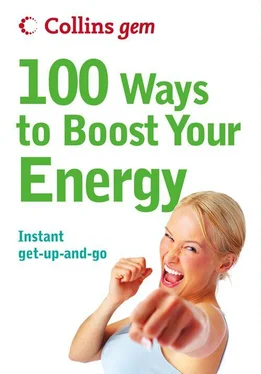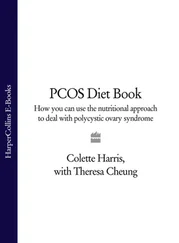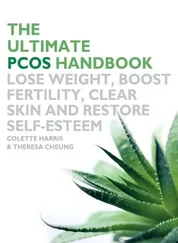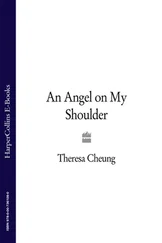If this ‘grumpy and run down’ theme is starting to sound very familiar, don’t despair. There are energy-drainers all around us – some obvious, some hidden. The good news is that you can find ways to deal with virtually all of them. Try one or all of the 100 simple and practical energy boosters in this book and, however hectic your lifestyle, you’re bound to see your energy levels soar. Use them both as ‘quick pick-me-ups’ when the going gets tough, and as energisers to increase your stamina in the long run, so that you have all the get-up-and-go you need to rise and shine every day.
Use them to help put a spring in your step and a twinkle in your eyes so that you look and feel alert, vibrant and sparkling with energy.
PART ONE: UNDERSTANDING ENERGY
Energy is life. It is the invisible force that animates the human body and permeates everything in the natural world, including animals, plants, trees and mountains, as well as the earth, sun, moon and stars. Whenever something moves, heats, cools, grows, changes or produces light or sound, energy is involved.
One of the simplest forms of energy is metabolic; this is the energy we get from the food we eat and the air we breathe. In short, energy means that birds can fly, winds can blow, the sun can shine, cars can go fast, light bulbs can glow and you can read this book. Without energy there would be nothing: no life, no movement, no light, no books…nothing.
‘Vital energy’ is a term used to describe the collective physical energies of the mind and body working together to produce feelings of well-being. In other words, it means feeling glad to be alive, and bursting with health and energy. Typically children are bursting with vital energy – but an increasing number of adults are finding it harder and harder to remember the last time they felt like that.
A healthy person is a person who has a sense of well-being characterised by a high level of energy and the ability to cope with stress. Feeling tired and stressed a lot of the time is not healthy. Unfortunately, many of us unconsciously settle for energy levels that are lacklustre, in the belief that it is normal to ‘run on empty’. But low energy levels are certainly not normal or healthy.
Energy is our most precious human resource. If we don’t have it, not only is our immunity low and our health at risk, but we don’t have the ‘oomph’ we need to rise to the challenge of work, have fulfilling relationships and experience the joy of being alive that is our birthright. If we don’t have energy, we are simply going through the motions of life.
Although energy can put a spring in our step and help keep disease at bay, it’s important to remember that healthy energy levels are also balanced energy levels. In other words, we need to have the energy to meet the challenges of life without going into overdrive. Overdrive is certainly not good for our health and well-being because it makes it hard to switch off and relax, and increases our risk of stress and poor health. What we need to be aiming for isn’t constantly high energy levels but a steady flow of balanced physical, emotional and mental energy; these balanced levels are essential if we are genuinely to experience good health and vitality.
It’s important to know that our energy level won’t remain constant throughout the day; there will be natural dips. In fact, scientists have identified 2.16 p.m. as the time most of us experience an energy dip, so if you get a slump around this time it does not mean that anything is ‘wrong’.
Some energy lows are of our own doing – caused by those late nights or too much caffeine – but the conductor of our energy levels is a cluster of cells that lie deep within our brains, directing our daily release of hormones, our shifts in body temperature and our blood pressure. This conductor produces what are called ‘circadian rhythms’.
Research has shown that one of the most powerful regulators of our internal body clock or circadian rhythm is light . When photoreceptors in our eyes and other places absorb light, they send a signal to our brains to stop producing melatonin, the so-called sleep hormone. With light comes a cessation of melatonin production, and our gradually increasing body temperature makes us feel alert. During the day our temperature fluctuates, rising in the mid-morning, hitting a low at around 3 p.m. and then rising again in mid-afternoon; this could explain why we often get a second wind around this time. By 11 p.m., when the lights are usually turned off, melatonin production starts and temperature, heart rate and blood pressure drop in preparation for sleep.
It’s important to understand the physical rhythms that guide our days so we can learn to make the most of energy peaks and prepare ourselves for energy troughs. One way to keep track is to have an energy diary and write down the times when you feel alert or tired during the day. Once you are aware of your ‘downtime’, you can plan your life accordingly. For example, if you get a slump at around 3 p.m. you can avoid planning meetings at that time – or use some of the instant pick-me-up tips on pages 175–89. If, however, you find that your energy is constantly low or that you have more troughs than peaks during the day, your energy levels are lower than they should be.
Symptoms of low energy vary from person to person. In general when your energy is low, although you may be able to cope with your normal routine, you’ve lost that spring in your step and anything that requires a little more effort tires you quickly. You may often simply wake up tired and just have a general feeling of being out of sorts.
To rate your energy levels, answer the following questions:
☐ When you wake up in the morning, do you drag yourself reluctantly out of bed?
☐ Do you find yourself longing for an afternoon nap in the morning?
☐ At the end of the day, is slumping in front of the TV all that you want to do?
☐ During meetings do you easily become distracted or bored, or find it hard to keep your eyes open?
☐ Do you sometimes feel that you haven’t got the energy to get through the day?
☐ Do you fall asleep the moment your head hits the pillow?
☐ Do you often feel so wound up that it is hard to get to sleep?
☐ Does seeing or talking to friends seem like a huge effort sometimes?
☐ Is it hard to remember things or to concentrate at work?
☐ Do you find yourself getting worked up or impatient about the smallest things?
☐ Do you need caffeine or other stimulants to help you through the day?
☐ Are you susceptible to colds and other minor illnesses?
☐ Do you find it difficult to raise much enthusiasm for doing anything at all?
☐ Is it hard for you to accept or deal with change?
☐ Has it been a few weeks since you had a good laugh?
If you have ticked more than two boxes, this suggests that your energy levels are lower than they should be.
The causes of low energy: energy-drainers
Low energy is a concept that’s hard to define. Everyone will have their own idea of what being tired means, and we all feel tired once in a while; but if you feel that you have lost some of your zest for life, your energy levels are lower than they should be and you need to find out why.
Identifying what is causing your energy to dip is important because once you know what is robbing you of your vitality, you can then take steps to avoid it or manage it positively.
In most cases there is not one single cause that contributes to low energy, but a combination of several factors. Listed below are some of the most common energy-drainers including poor-quality sleep, unhealthy eating, lack of exercise, environmental factors, stress and underlying medical conditions. Review the information and use it to help you recognise your most common energy-drainers so that you can make positive changes to your diet and/or lifestyle, or seek medical advice. Then you are all set to re-energise yourself by cultivating the energy-boosting advice from page 41 onwards.
Читать дальше



![Theresa Cheung - The Dream Dictionary from A to Z [Revised edition] - The Ultimate A–Z to Interpret the Secrets of Your Dreams](/books/692092/theresa-cheung-the-dream-dictionary-from-a-to-z-r-thumb.webp)








